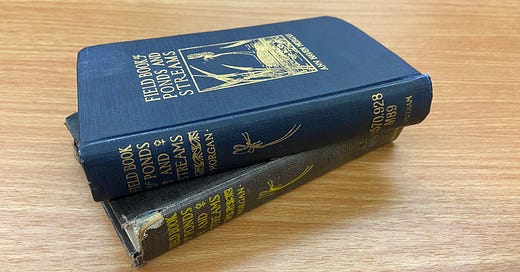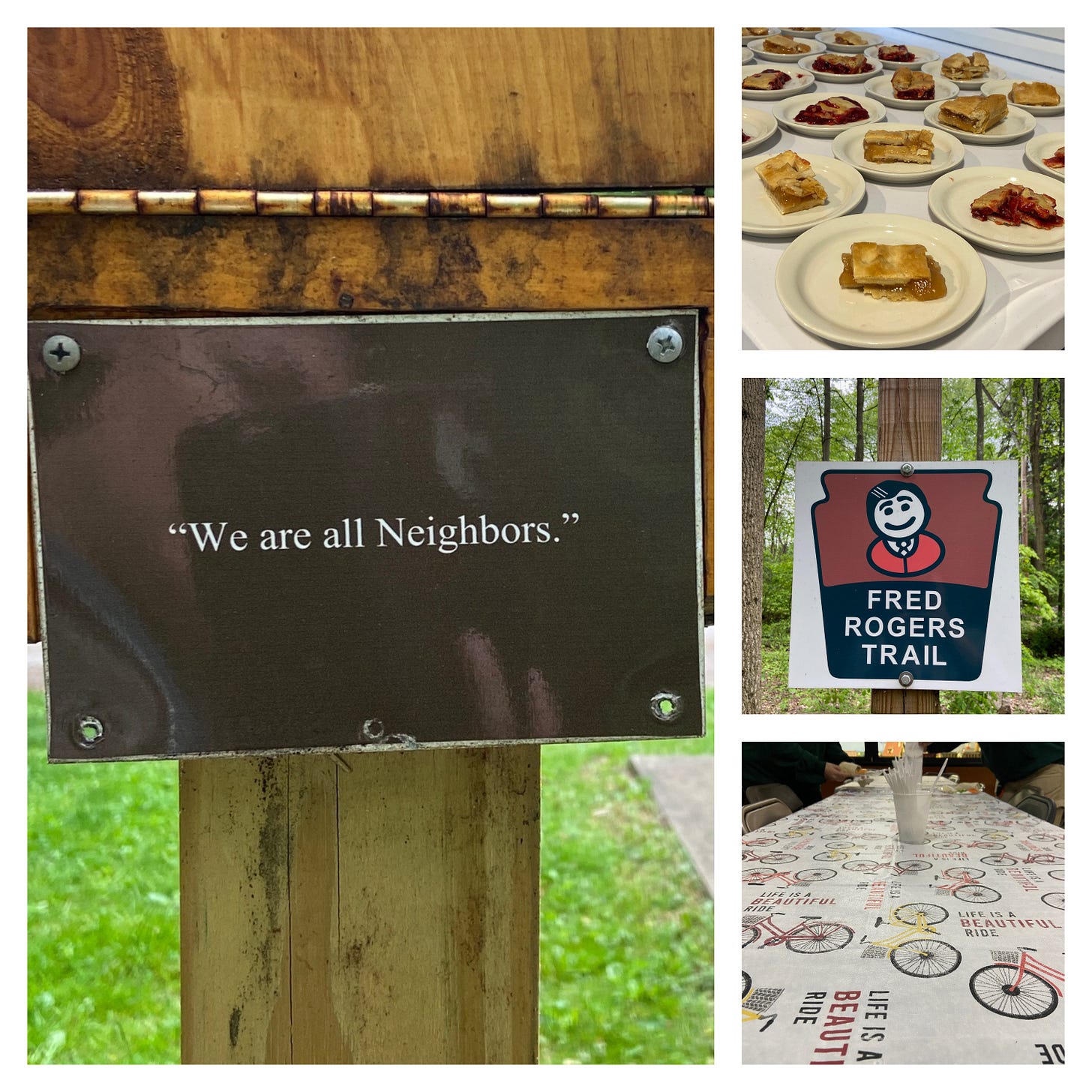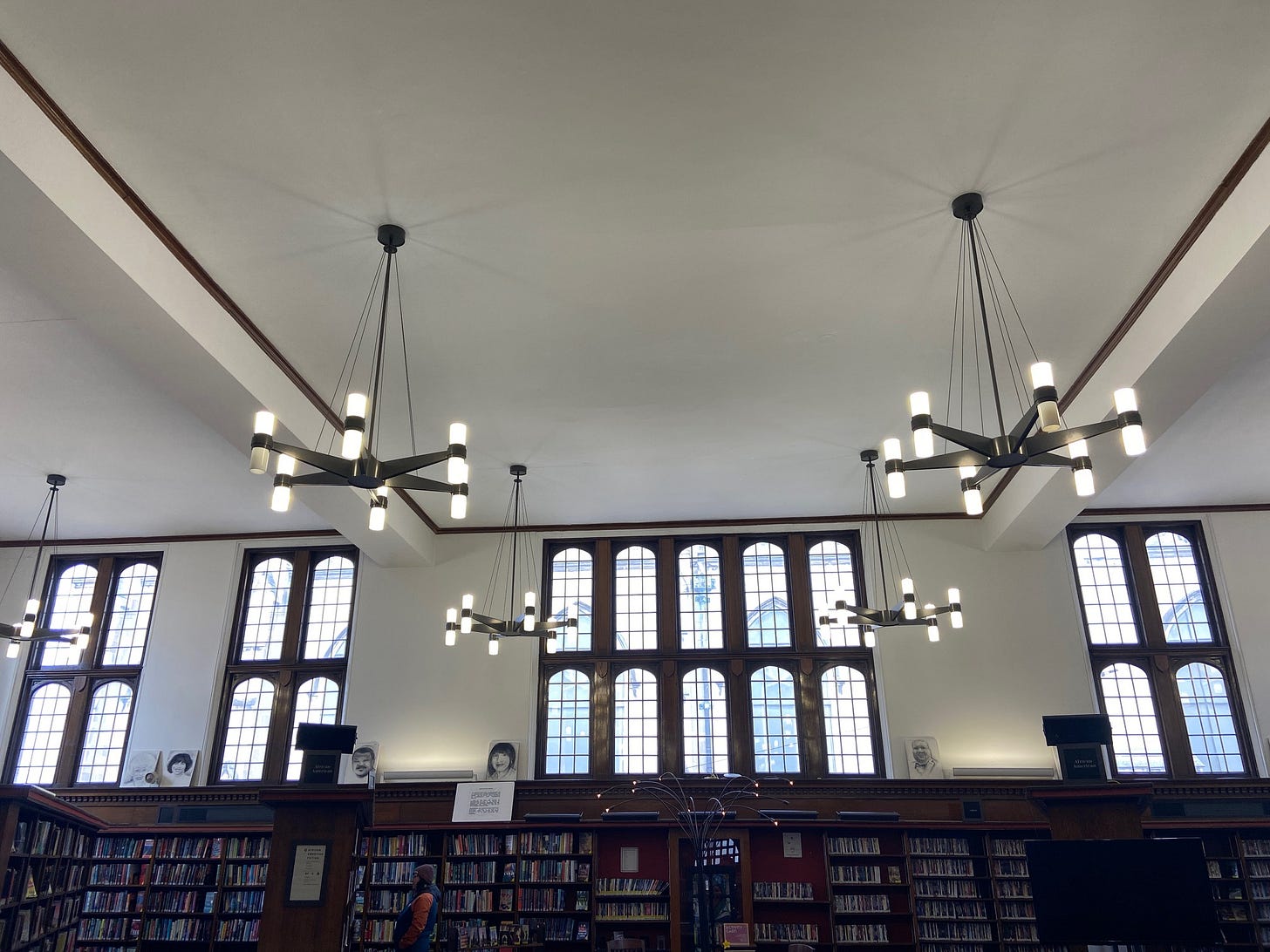I once heard that cultivating community involves a series of small, sweet steps…that there’s a sweetness to building community. That it’s the little things (both gestures and physical improvements) that deepen our connections to our places and to each other. Seth Bush of BikePGH introduced this idea to me. It’s changed they way I think about community.
I’ve been thinking a lot about this lately, so read on, sweet readers, if you want to hear more about unifying events, the importance of public libraries, a whistling cockatiel, and tracking down a rare book that Annie Dillard used to “visit” as a child. These may seem like a bunch of disparate stories, but I promise that they tie together.
As always, if you enjoy this post, please hit the heart icon and consider sharing it with others.
Part 1: The 2015 Pittsburgh Marathon
I’ve watched the Pittsburgh Marathon a handful of times, but only cried when I watched from Homewood in 2015. It was the first time I watched the marathon. There, I witnessed residents of a predominantly Black neighborhood cheer on tens of thousands of mostly white runners. There were megaphones. There was line dancing. There were impromptu dances (with some runners stopping to step along). Someone with a mic shouted, “Go runners, go runners” on repeat. A little girl scooted alongside the runners. There were so many sweet exchanges that morning. It was one of those days that it felt as if we all were getting it right. The Pittsburgh Marathon is a unifying event, and to watch in Homewood was a real treat. A Pittsburgh neighborhood-sized lump jumped up into my throat that day.
Part 2: Being Better Hosts in the Maple City
Ten years later (nearly to the date), I was in Meyersdale, Pennsylvania for the PA Outdoor Ambassador Program I’ve been working on. Meyersdale is affectionately called “The Maple City” due to the area’s maple syrup production and the town hosting the Pennsylvania Maple Festival since 1948. But what’s so sweet about Meyersdale, in my opinion, are the people who offer such a warm welcome to its visitors. I had the Outdoor Ambassadors visiting Meyersdale a few weeks ago to learn about “being better hosts.” The program included visits to a couple dozen sites. Meyersdale was easily one of my top few because they received us as their guests and were so attentive to our needs. We learned about being better hosts by being so well cared for as guests. Imagine the owner of the catering restaurant (Melissa Friend of Donges Drive-In) not only personally delivering and setting up the food, but also ensuring that every last dietary need was accommodated and then sticking around for a meaningful discussion about hospitality. This kind of thing happens every time I’m in Meyersdale.
And the bow on top concerning the ambassador program? We closed out our site visits with a trip to Buttermilk Falls, part of Visit PA’s Fred Rogers Trail. The park trail is lined with Fred Rogers quotes, including, “We are all neighbors.” Being neighborly, kind, and welcoming are things we all can do. We learned this from Mister Rogers, and we have the chance to live this every day, whether we’re on the sidelines of a marathon, visiting a small town visitor center, or stopping by our local library.
Part 3: A Story of Two Library Systems
A couple of weeks ago, I visited Jersey Shore, Pennsylvania – located along both the Pine Creek Rail Trail and Susquehanna River Trail. I needed a place to work on a project before making my way home. Enter the Jersey Shore Public Library. Spending a couple of hours there reminded me of the outsized role libraries tend to play in rural areas. In a town of 4,000 residents, Jersey Shore’s library has 1.4 thousand Facebook followers. That’s a wild ratio! Something is working. I think it has to do with the kind of welcoming space the library’s created and the services it provides. In two short hours, people came in to pick up books, check on interlibrary loans, and use the printer, fax machines, and WiFi. I saw a nonverbal patron gently escorted outside for fresh air when he appeared to be frustrated. A few people seemed to be there just for conversation (i.e., connection). Two police officers stopped by for a welfare check, knowing that the person they were checking on frequents the library. On top of all this, the librarians are hatching chicks this Spring! The three “early birds” (Dewey, Page, and Booker 🤣) are said to be making the resident cockatiel, Pippin, a bit jealous. One of the librarians said Pippen’s been less vocal than usual. Even so, he whistled the Andy Griffith Show theme song while I was there, without prompting, adding to the utter delight of the Jersey Shore Public Library. I have to say, this was not a quiet library, but it’s well-used, and provides a clearly needed community space. Does it get any sweeter than this?
Meanwhile, at home in Pittsburgh last month, the Carnegie Library of Pittsburgh (CLP, serving a community of nearly 3 million people across 19 branches) was clutch following a severe storm. The day following the storm, CLP saw nearly double its normal foot traffic, welcoming almost 10,000 people and updating more than 7,000 library cards. Never doubt the essential role libraries plays across communities.
Part 4: Annie Dillard’s Homewood (and Home Library)
When I watched the marathon in Homewood all those years ago, I was also in the midst of reading Annie Dillard's memoir, An American Childhood. Native to Pittsburgh, Dillard used CLP’s Homewood branch as a child. She writes about sitting on the library floor "visiting" one of her favorite books, The Field Book of Ponds and Streams, and imagining that others who had also borrowed the book might share in her dreams of the natural world. Dillard dedicates the better part of a chapter writing about the Homewood branch and the field guide. She writes about both in the context of race (this was 1960s Pittsburgh) as well as how important of a space it was for her in her childhood years. “This was the most private and obscure part of life,” she writes. There seemed to be “an infinitude of books” which she enjoyed “in deep concentration for many years.”
But what about that one book, The Field Book of Ponds and Streams? Thinking about Dillard, I paid my first visit to the Homewood branch in March. Why did it take me so many years to finally see this incredible building for myself? But that’s besides the point. I tried to imagine Pulitzer Prize-winning, National Humanities Award-winning Annie Dillard not as an internationally acclaimed author, but as a wide-eyed child sitting on the marble floor of the library “visiting” her favorite books.
I looked up the field guide and found that it’s no longer there at the branch. There are, however, two copies in the CLP system. Housed in the rare collections, these copies are available for in-library use only. At this point, it should come as no surprise to you that I made an appointment to visit with the book. I requested both copies to increase the odds that I would be viewing the copy that Dillard paged through so many times. In reality, it’s unlikely that the old Homewood Library copy is one of the two. For my appointment, I was seated next to the librarian and provided the two books, a book cradle, a book weight (so I could take photos), and slips of paper for marking pages. It’s wild how reverent I felt about the whole thing. And fortunate to have this opportunity. I walked out of the library thinking “this is the greatest city in the world” (borrowing from Hamilton). I really felt that way in the moment due to having so many resources – the library, museums, parks, and more right there in a single neighborhood – at my fingertips.
As for the field guide, I can see how a nature-writer-in-the-making would become absorbed in it. With a subtitle “An Introduction to the Life of Fresh Water,” it covered everything from snails and mussels to water plants and collecting methods (which she could attempt a mile away in Frick Park). Written in 1930, the book included detailed, full color illustrations, and spoke to both the wonder of fresh water habitats and the need to protect them:
“To make the knowledge of the whole range of life in ponds and streams a little more easy of access is a major purpose of this book. And with that knowledge will come appreciation, and a purpose to aid in keeping the waters free from pollution.”
This call to action came 42 years before the Clean Water Act, and 25 years before Rachel Carson published The Edge of the Sea. Could this field guide have influenced both Annie Dillard of Pittsburgh and Rachel Carson of nearby Springdale, both of whom were keen observers of the natural world? Perhaps. It’s rather sweet to consider the possibility. After all, as Dillard noted in An American Childhood (recalling one of the library’s posters), “anything can happen.”








Amy, As is often the case, you inspire and delight me with your writing. I hope you continue to experience and pass along such "sweetness".
Cathy M
Amy, you always seem to make me think, how can I help the community. How can I do it, and be more inclusive? I try to learn new methods, and have captured your "sweet" Mister Rogers quote, "We are all neighbors". It will be on the trail for this weekend's Celebrate Trails Day!